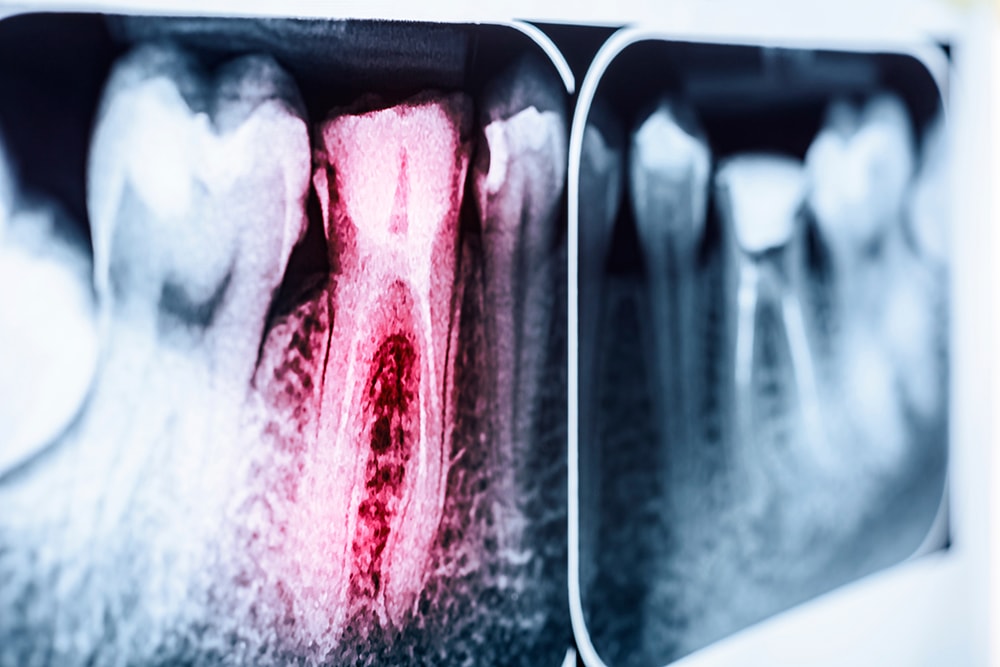Root Canal Treatment
Root canal treatment is a common endodontic (“endo” = inside; “dont” = tooth) procedure that is often needed when the pulp tissue deep inside a tooth becomes infected or inflamed. A root canal procedure can stop the progression of disease and save a tooth that might otherwise need extraction. Preserving the natural teeth has many advantages for your oral health, and is a major goal of modern dentistry.
You may have heard some well-worn myths saying that this procedure is painful; in fact, quite the opposite is true. Root canal therapy actually relieves the pain caused by bacterial infection. To understand how the procedure works and why it’s needed, let’s take a closer look inside the tooth.
Tooth Anatomy
The exposed surfaces (crowns) of teeth are covered by a thin layer of enamel, the hardest substance in the human body. Underneath the enamel is dentin, a yellowish bonelike material that makes up the bulk of the tooth. Dentin can relay sensations into the pulp tissue deep within the tooth, which contains nerves, blood vessels and connective tissue.
The pulp extends from inside the crown of the tooth through a narrow canal in each root; teeth have up to 3 roots, depending on their function and where they are located in the mouth. Pulp is needed during childhood, when teeth are developing and growing, but is not necessary once they’re fully mature.
Although pulp tissue is normally protected from external influences, it sometimes becomes diseased or damaged. The most common sources of infection are deep decay from dental caries (cavities) or external trauma (cracked or broken teeth). Practicing good dental hygiene and wearing protective mouthguards while playing sports can help protect you against many problems—but despite these preventive measures, root canal trouble may develop.
Symptoms & Diagnosis
The major symptom of problems in the pulp tissue is pain. It can be continuous and severe, or intermittent, triggered by temperature changes, or biting down on food or another tooth. Tooth discoloration (often from previous trauma), gum swelling and sensitivity to touch may also indicate root canal problems. But surprisingly, pulp disease or damage can be often pain free, and is sometimes discovered on an x-ray during a regular checkup.
Your dentist can determine what’s causing the pain or infection through a dental examination and x-ray and simultaneously assess the viability of root canal therapy. General dentists can perform root canal procedures, but they may also refer you to an endodontist: a specialist with 2 to 3 years of additional training in the diagnosis and treatment of dental pain and related pulp diseases and disorders.
Treatment
Root canal treatment is most often provided in a dental office setting. Before the procedure begins, local anesthesia (usually a numbing shot) is given so you won’t feel any pain. If you are especially nervous, your endodontist may recommend an oral sedative or anti-anxiety medication. Be sure to mention your concerns in advance so you can discuss your options.
Next, the tooth under treatment will be isolated from the rest of the mouth by a thin sheet of rubber or vinyl called a “dental dam” to protect against bacterial contamination. Then, the endodontist will use a miniature drill to create access to the pulp chamber and root canal(s) either from the chewing surface of an affected back tooth, or from the backside of a front tooth.
Using specially designed instruments, the endodontist will next remove all the diseased pulp tissue from the entire length of the root canal(s) and pulp chamber, and disinfect them with antiseptic and antibacterial solutions. Then, the endodontist will shape the pulp chamber and canal(s) with tiny flexible instruments to optimize them for receiving filling and sealing materials. The cleaned space is typically filled with gutta-percha, a rubber-like natural material. The final step is the insertion of temporary or permanent filling material to seal the access hole that was made to treat the canal(s). After the procedure is finished, you will return home.

 Login
Login